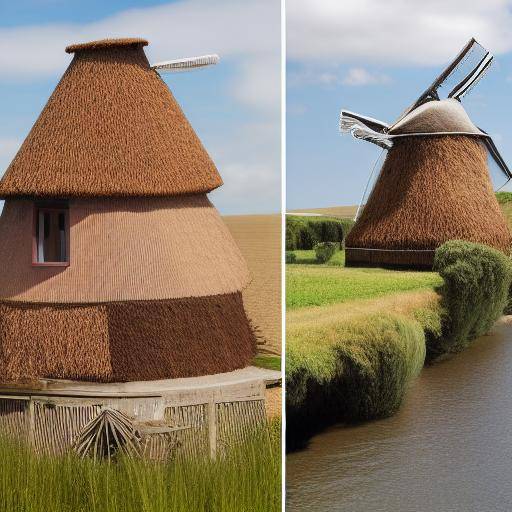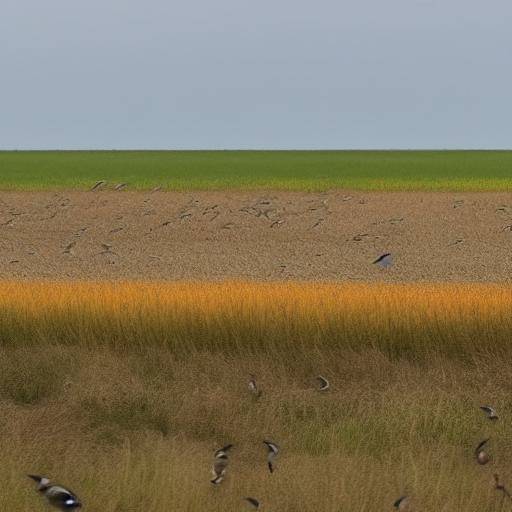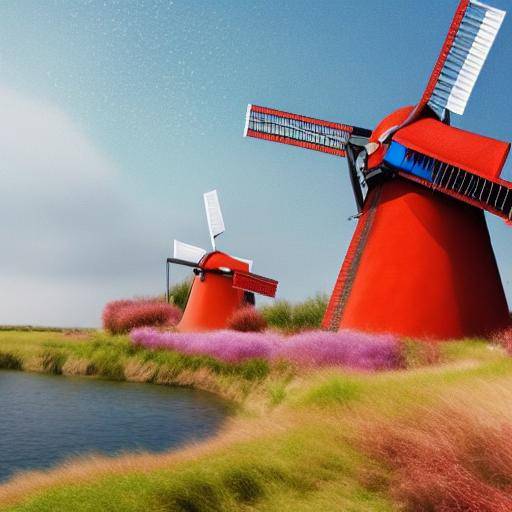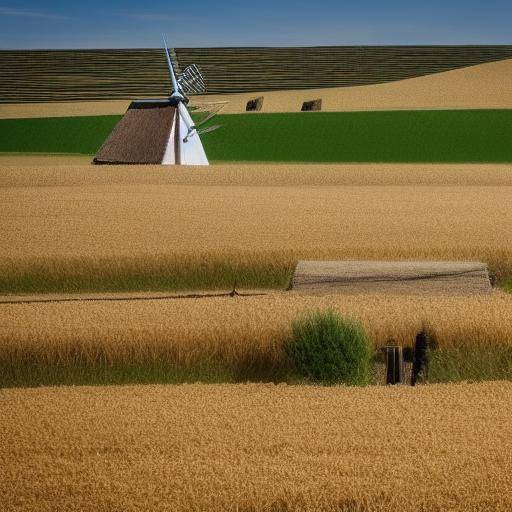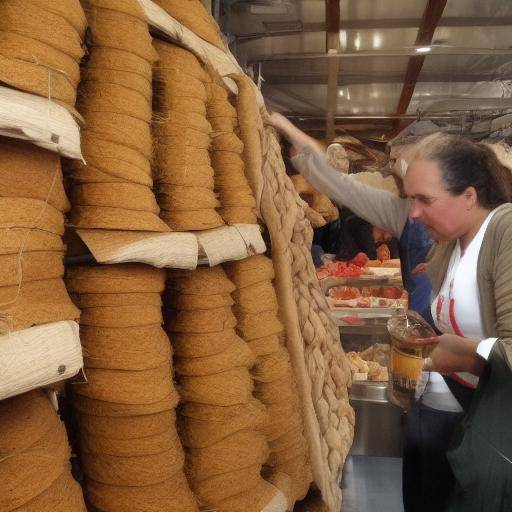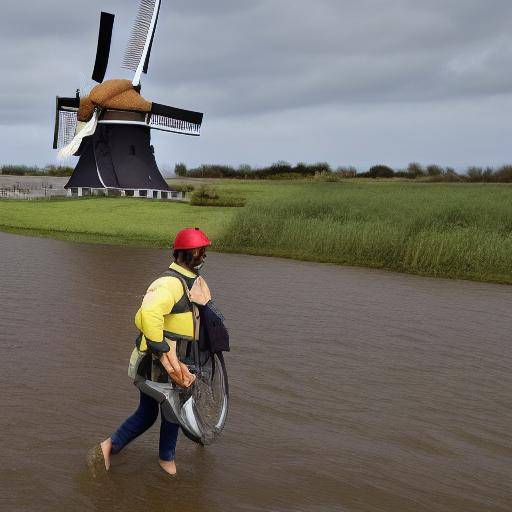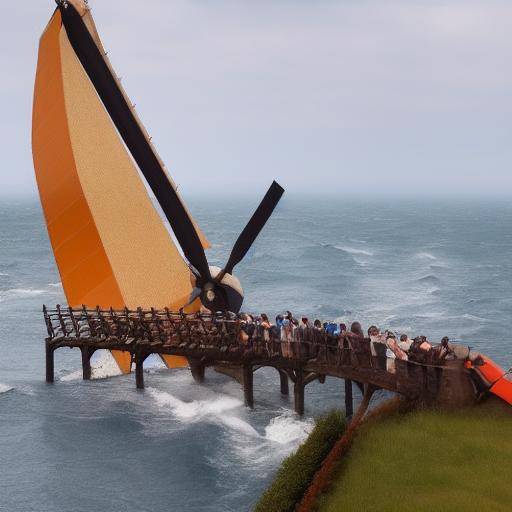
The iconic landscape of windmills in the Netherlands embodies a rich history and unique architectural tradition that has captured the imagination of people from around the world. From its historical origin to its contemporary relevance, we will explore the fascinating route of windmills in Holland, and we will discover how this form of traditional architecture has endured over the centuries.
Introduction
Windmills are a distinctive symbol of the Dutch part of Europe. These majestic structures have played a crucial role in Holland's history, economy and cultural landscape. From its original use to grind grains and drain land to its modern applications in the generation of sustainable energy, windmills represent a wonderful amalgam of history and technology.
In this article, we will thoroughly explore the history and evolution of windmills in Holland, the importance of traditional architecture in its design, its contemporary relevance and its impact on national identity. In addition, we will analyze the perspectives of experts and the latest trends in the conservation and use of windmills, as well as their connection with culture and tourism in the Netherlands.
History and Background
The history of windmills in Holland dates back centuries, when these ingenious artifacts became an integral part of the Dutch landscape. In the epicenter of low flood-prone land, windmills played a key role in water drainage, which allowed the expansion of agriculture and the development of the economy.
The use of windmills to grind grains was also crucial for the livelihood of local communities, which marked the beginning of the importance of these elements in the daily life of the Dutch. Over time, windmills became an emblem of Dutch technical skill and innovation, serving as a source of national pride and a symbol of resistance against natural adversities.
Analysis in Deep
At present, the preservation and maintenance of windmills in the Netherlands have evolved to reflect their historical importance and their contemporary potential. The combination of traditional and modern techniques to preserve and use these monuments is a subject of enormous interest. The traditional architecture of windmills represents both a challenge and an opportunity in the current context of sustainability and the conservation of cultural heritage.
Comprehensive review
The unique experience of visiting windmills in the Netherlands offers a deep perspective on the connection between traditional architecture and landscape. Windmills have become a tourist attraction, giving visitors from around the world the opportunity to witness closely both the beauty and functionality of these historical structures.
Comparative analysis
By contrasting the presence of windmills in the Netherlands with other forms of traditional architecture, its uniqueness and its integration with the natural environment are revealed. The combination of functionality and aesthetics in windmills distinguishes them as a national icon intrinsically linked to the Dutch identity.
Practical Tips and Accessible Tips
If you have the opportunity to visit the Netherlands, do not miss the opportunity to explore the windmill route. Looking at these historical monuments will give you a deeper appreciation of the relationship between history, architecture and landscape. Make sure you plan your trip well in advance to maximize your experience.
Conclusions
The windmills in the Netherlands are not only historical monuments, but also living testimonies of technical skill and human imagination. Its lasting legacy in the Dutch landscape represents an unwavering link between the past and the present of the nation.
Frequently asked questions
1. What is the importance of windmills in Holland's history?
Windmills played a key role in the economic development and survival of the Dutch communities by assisting in draining low-lands prone to floods and in grinding grains for food.
2. How has the traditional architecture of windmills adapted to contemporary needs?
The preservation and maintenance of windmills have incorporated modern conservation techniques and alternative uses, such as sustainable energy generation, to adapt to current challenges.
3. What impact do windmills have on tourism in the Netherlands?
Windmills are a tourist attraction featured in the Netherlands, attracting visitors from around the world and contributing significantly to the local and regional economy.
4. What is the relevance of traditional architecture in the Dutch national identity?
The traditional architecture of windmills represents a symbol of technical skill and Dutch resistance, rooted in national identity and cultural heritage.
5. What are the challenges facing windmills in conservation and preservation?
Challenges include adequate funding for conservation, adaptation to current environmental regulations and the balance between the preservation of cultural heritage and contemporary uses.
6. How can I visit the windmills in Holland?
Windmills are located in various regions of the Netherlands. It is possible to make specific guided tours to learn about its history and its functioning, as well as explore established routes to enjoy its beauty and cultural importance.
In short, windmills in the Netherlands are not only historical monuments, but also living testimonies of technical skill and human imagination. Its lasting legacy in the Dutch landscape represents an unwavering link between the past and the present of the nation.
About the Author:
Cristina Lopez is a passionate writer and traveler with experience in exploring and documenting the cultural and architectural wealth of many destinations around the world. Its fascination with traditional history and architecture has led it to deepen in themes that connect the past with the present, such as windmills in Holland. With an enriching and insightful approach, Cristina shares her knowledge and passion with avid readers of discovering the beauty and heritage of different cultures through her writings.
Additional resources:
- Official Dutch tourism website - Windmills
- Windmill Route in Kinderdijk
- Official website of the Netherlands Wind Molinos Association
With this detailed guide on windmills in the Netherlands, we are sure that you will be fully prepared to discover and appreciate the magnificence and history that surround these iconic monuments of traditional architecture. We hope you enjoy your trip!

